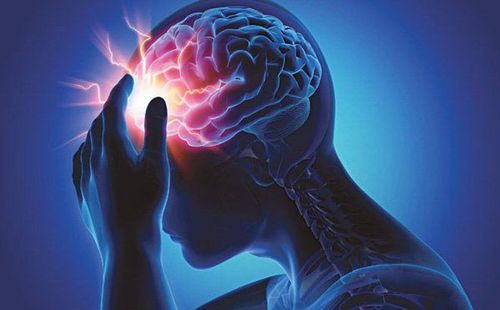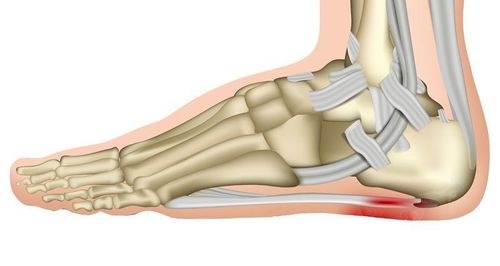This is an automatically translated article.
The article is professionally consulted by Master, Doctor Vu Duy Chinh - Rehabilitation Doctor at High-Tech Unit for Treatment of Cerebral Palsy and Autism and Master, Doctor Ngo Van Doan - Head of Diagnostic Department image, Vinmec Times City International General Hospital.Cerebral palsy is a term that refers to a group of medical conditions due to CNS damage that do not progress over time, caused by causes before birth, during and after birth until less than 5 years of age, causing multiple conditions. disabilities in movement, mind, senses and behavior... leaving heavy consequences not only for the children themselves and their families but also for their economic and social development.
Based on clinical symptoms, cerebral palsy is classified into the following diseases:
Spasticity; Can dance around ; Ataxia (loss of coordination); Flatulence (hypotonicity); Mixed body (usually a combination of spasticity and schizophrenia).
1. Diagnostic criteria for spastic cerebral palsy
When a patient is diagnosed with spastic cerebral palsy, in addition to asking the patient, taking the history, and doing a physical exam to find out and determine the cause of the cerebral palsy, the doctor will probably perform a number of tests. necessary functional tests such as: magnetic resonance imaging, electroencephalogram, brain ultrasound through the fontanelle, performing psychological assessments... to find out the cause of the disease and assess the patient's cognitive ability.Criteria for the diagnosis of spastic cerebral palsy include:
Increased muscle tone in the affected limbs occurs when the child tries to move, especially when balancing, this symptom is very evident in children severe spasticity. In children with severe spastic cerebral palsy, the muscles are in a state of co-contraction, that is, all the muscles of the limbs and trunk are spastic; Decreased mobility in individual joints; Signs of damage to the pyramidal system; Increased tendon reflexes in limbs damaged by increased muscle tone; There are primitive reflexes in infants over six months of age and pathological reflexes. Normal infant reflexes usually disappear before the baby is 6-12 months old. Doctors can check your baby's medical history and try to rule out other disorders that may cause similar symptoms. Sensory dysregulation may be present; Possible paralysis of the cranial nerves; Other signs: foot tremors, contractures in joints, scoliosis, epilepsy....; Mental retardation of different degrees.

Có những tiêu chuẩn nào để chẩn đoán bại não thể co cứng?
2. Diagnosis of spastic cerebral palsy by magnetic resonance imaging
Conventional magnetic resonance imaging: Magnetic resonance imaging of nerve fibers (tractography) or Diffusion Tensor Imaging (DTI) is an advanced imaging technique, applied in the diagnosis of diseases. Neuropsychology to diagnose the cause of cerebral palsy when axonal damage is suspected or it is necessary to find a relationship between the lesion and axon to avoid axonal damage when interfering with the lesion.2.1. Indications Brain tumors that are invasive or adjacent to axonal bundles; Cases needing diagnosis of spastic cerebral palsy with suspicion of axonal damage; Multifocal sclerosis, white matter lesions in infarction, bleeding,...; Cerebral vascular malformations, need to find the relationship between the malformation and the axon bundle; Congenital malformations: ectopic gray matter, cleft encephalopathy...; Epilepsy. 2.2. Contraindications Magnetic resonance imaging is not performed in the following cases:
General contraindications; Patients carrying a pacemaker are not allowed to diagnose cerebral palsy by magnetic resonance imaging; A note during magnetic resonance imaging is that the patient needs to remove jewelry and magnetic metal tools on the body. Therefore, before taking magnetic resonance imaging, the patient needs to report to the doctor and technician about the means of support on the body to have a specific solution for each case.
2.3. Advantages Force-diffusion imaging is an imaging technique developed from simple diffusion-weighted magnetic resonance imaging. This technique allows determining the direction as well as the magnitude of the diffusion; The ability to detect the paths of nerve fiber bundles in the brain using force-diffusion imaging is known as bunion. Bundle imaging allows the creation of two- or three-dimensional images of the brain's nerve fiber system; In brain tumors, magnetic resonance imaging technique allows to determine the invasion or compression of nerve fiber bundles, associated brain tumor and nerve fibers, very important information in the diagnosis of spastic cerebral palsy; Diffuse magnetic resonance imaging provides additional important information about many pathological processes in the skull that conventional magnetic resonance cannot or is difficult to evaluate such as in tumorigenesis, inflammation, white matter disorders, etc.
.

Chụp cộng hưởng từ khuếch tán cung cấp thêm các thông tin quan trọng về nhiều quá trình bệnh lý ở sọ não
3. Advantages when diagnosing spastic cerebral palsy at Vinmec
3.1. Modern equipment and facilities, Vinmec Central Park International General Hospital and Vinmec Times City International Hospital are now large hospitals with modern equipment and machinery for medical examination and treatment. general and accurate, modern MRI to find out the cause of cerebral palsy in particular.Patients who perform magnetic resonance imaging of nerve fiber bundles at Vinmec will be supported by the support staff, technical staff clearly guide the manipulations, the procedure, the best safety issues, ensuring the best safety for the patient. good diagnostic images without harming the patient.
Especially, now Vinmec is the first hospital in Southeast Asia to put into use the new 3.0 Tesla Silent MRI machine from the US manufacturer GE Healthcare. The machine currently applies the safest and most accurate magnetic resonance imaging technology available today, without using X-rays, non-invasively.
3.2. Highly qualified medical team and doctors Team of highly qualified and experienced doctors, including:
Clinical examination:
Master, Doctor Vu Duy Chinh - Vinmec Times City International General Hospital ; Diagnostic Imaging:
Master, Doctor Ngo Van Doan - Vinmec Times City International General Hospital; Specialist Doctor I Nguyen Thanh Hai - Vinmec Times City International General Hospital; Master, Doctor Vu Thi Hau - Vinmec Times City International General Hospital; Doctor Nguyen Quynh Giang - Vinmec Times City International General Hospital; Doctor Tran Hai Dang - Vinmec Central Park International General Hospital. With these background, the Diagnostic Imaging Department of Vinmec Central Park International Hospital and Vinmec Times City can detect some causes of cerebral palsy by magnetic resonance imaging of nerve fiber bundles. accurate, fast, and highly effective treatment.
Customers interested in magnetic resonance imaging techniques, please contact HOTLINE:
Vinmec Times City International General Hospital - 0243 9743 556 Vinmec Central Park International General Hospital - 0283 6221 166














